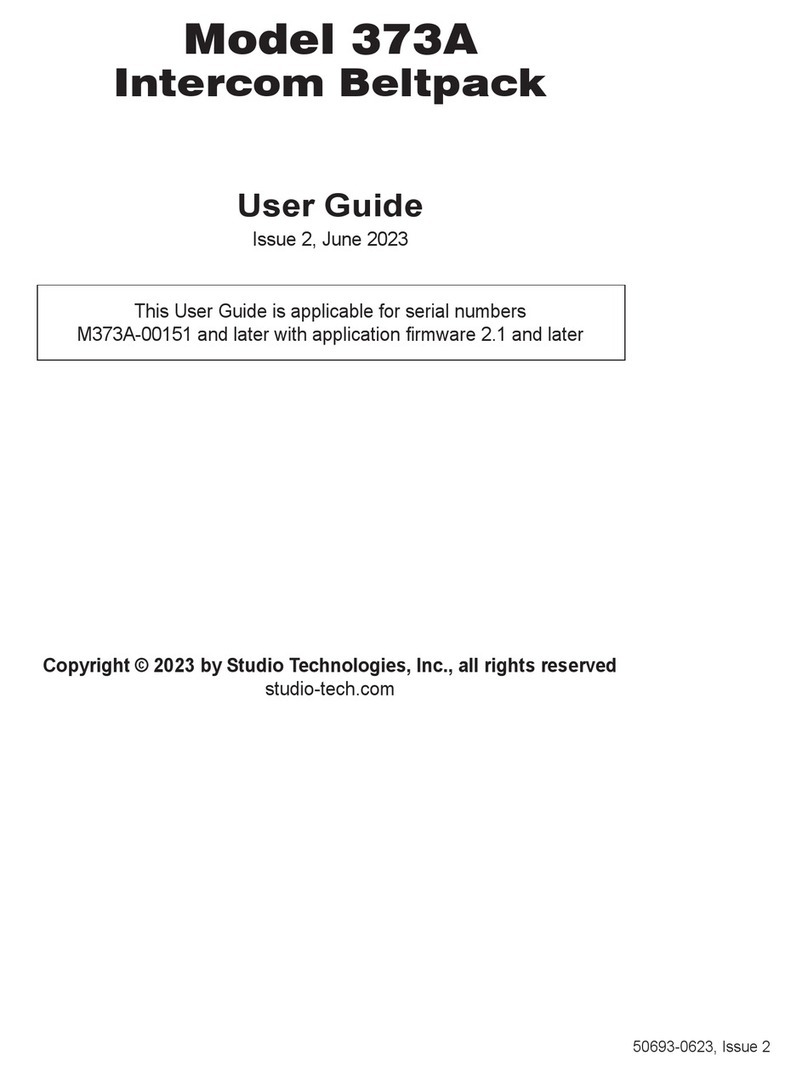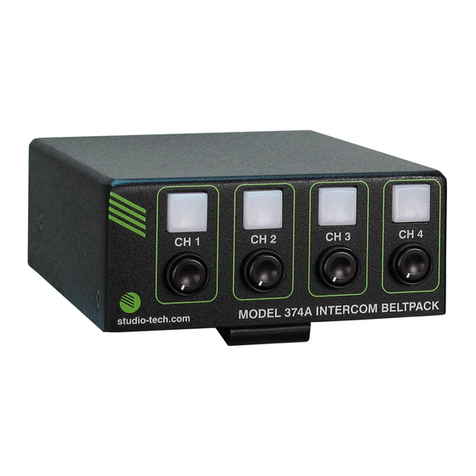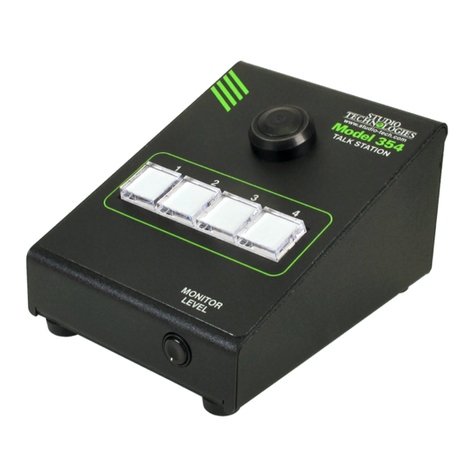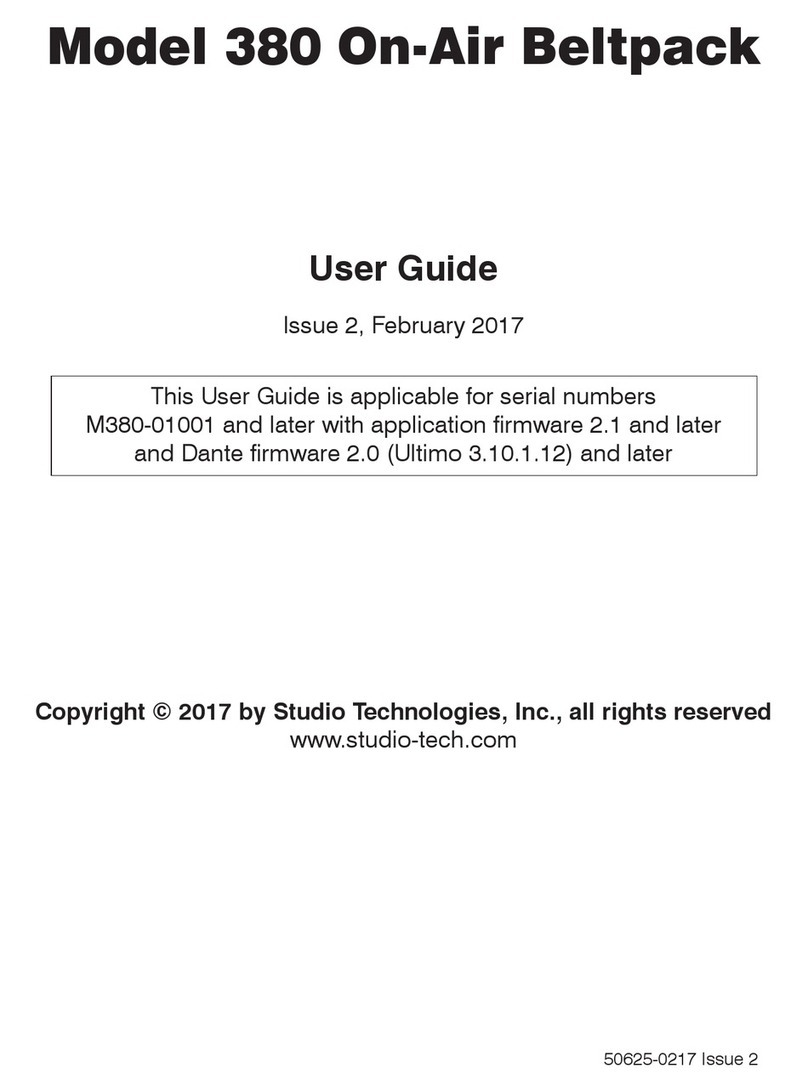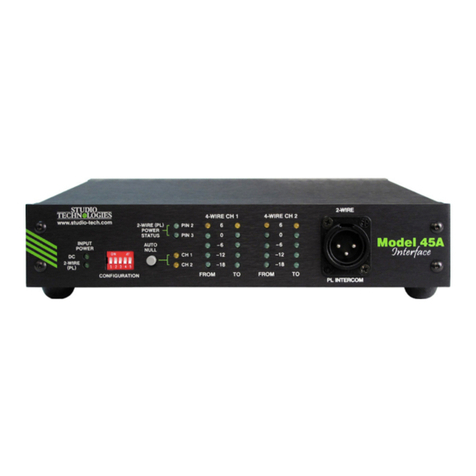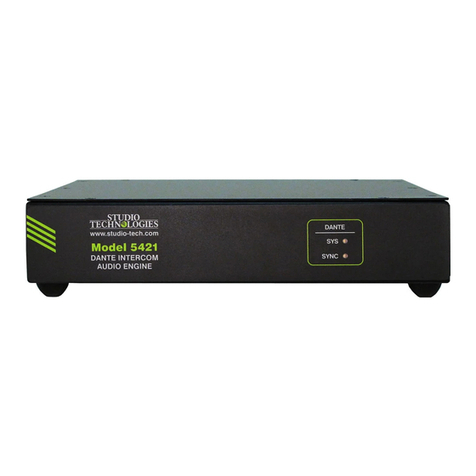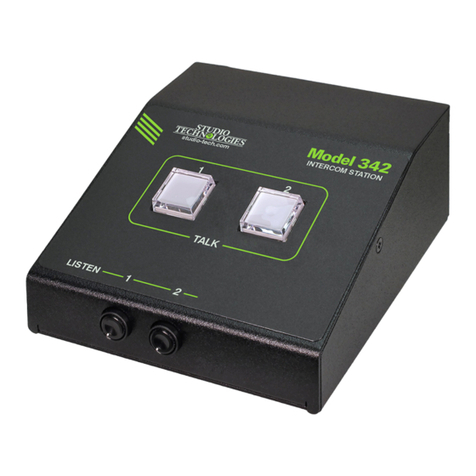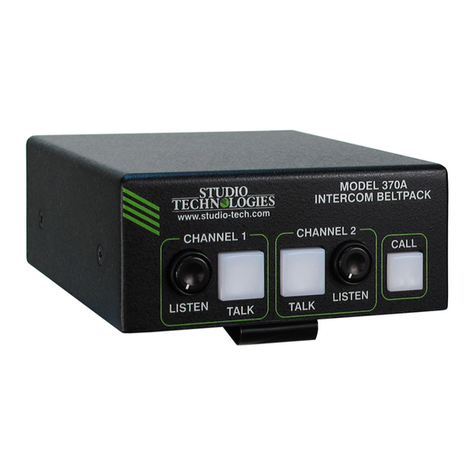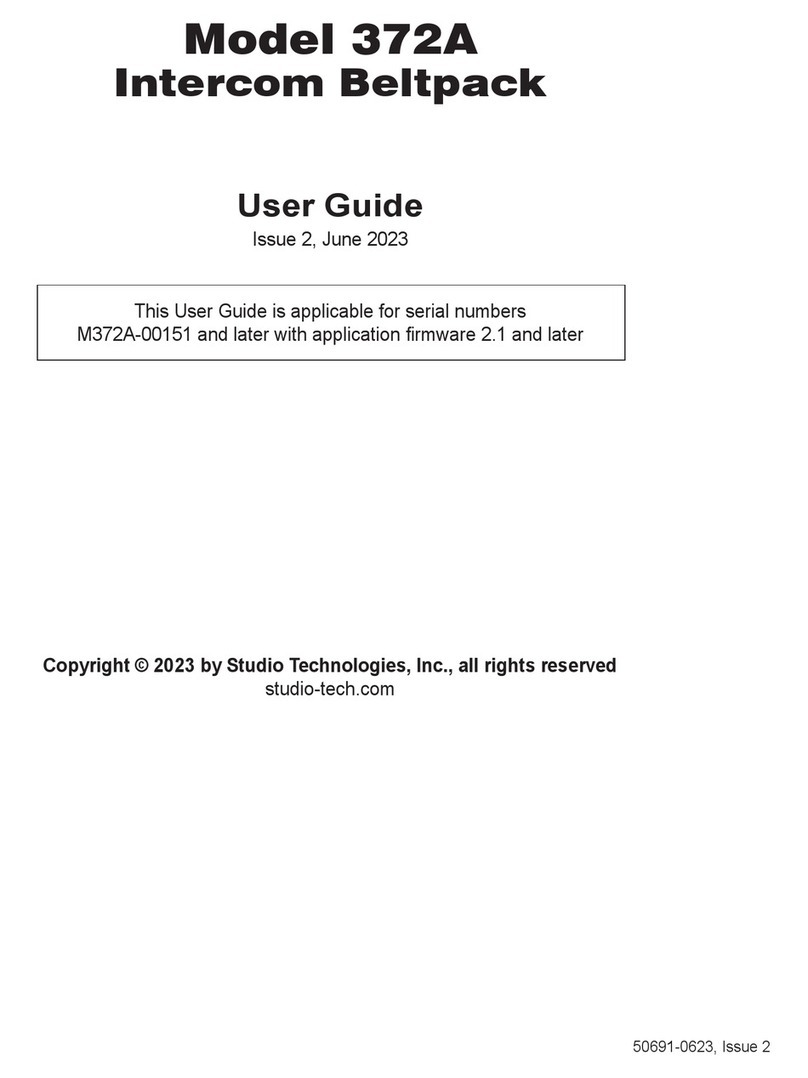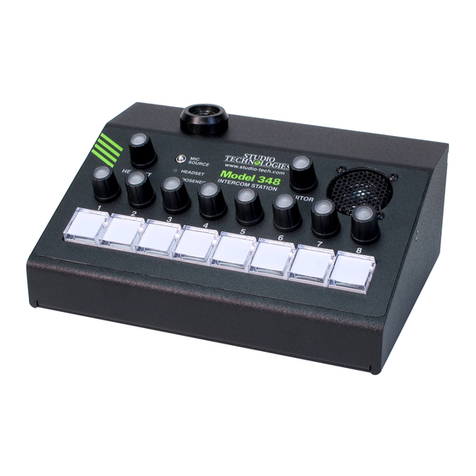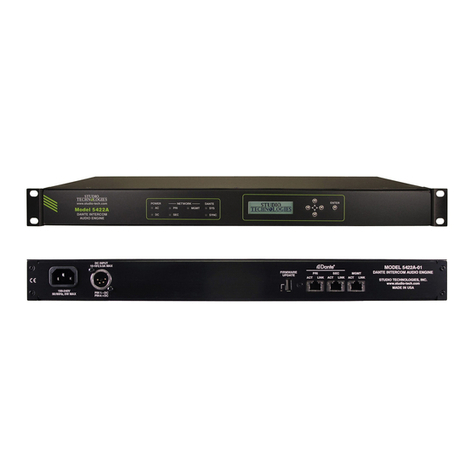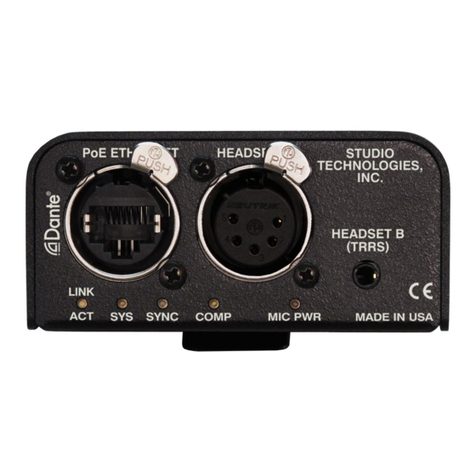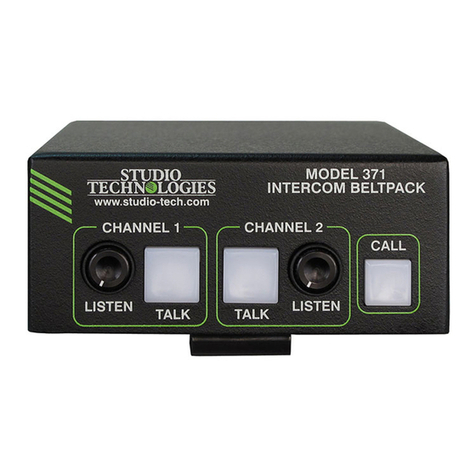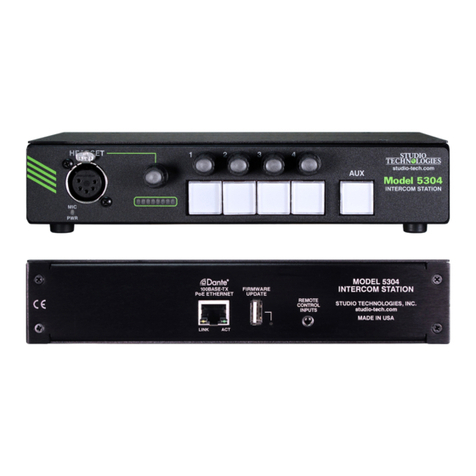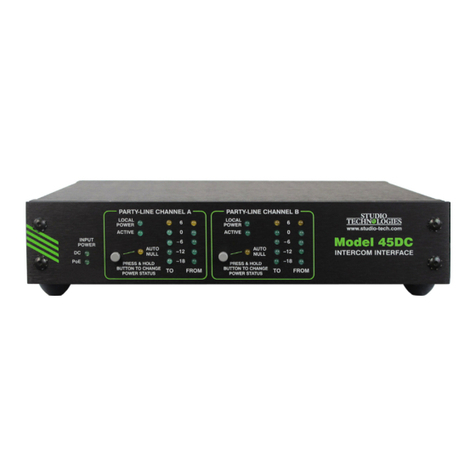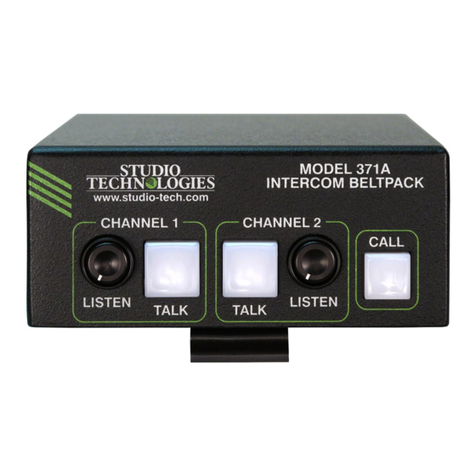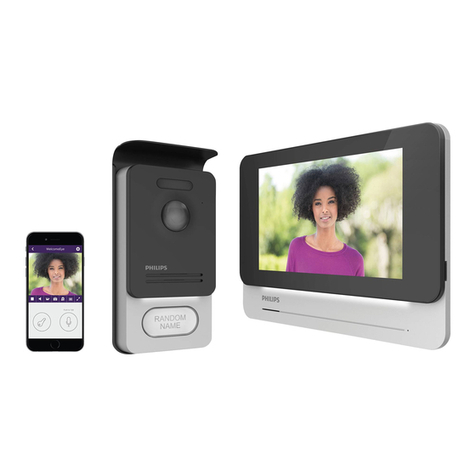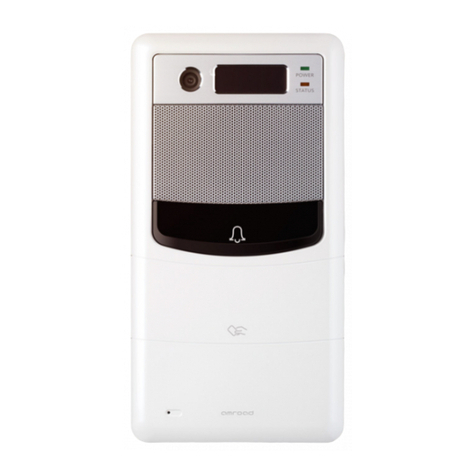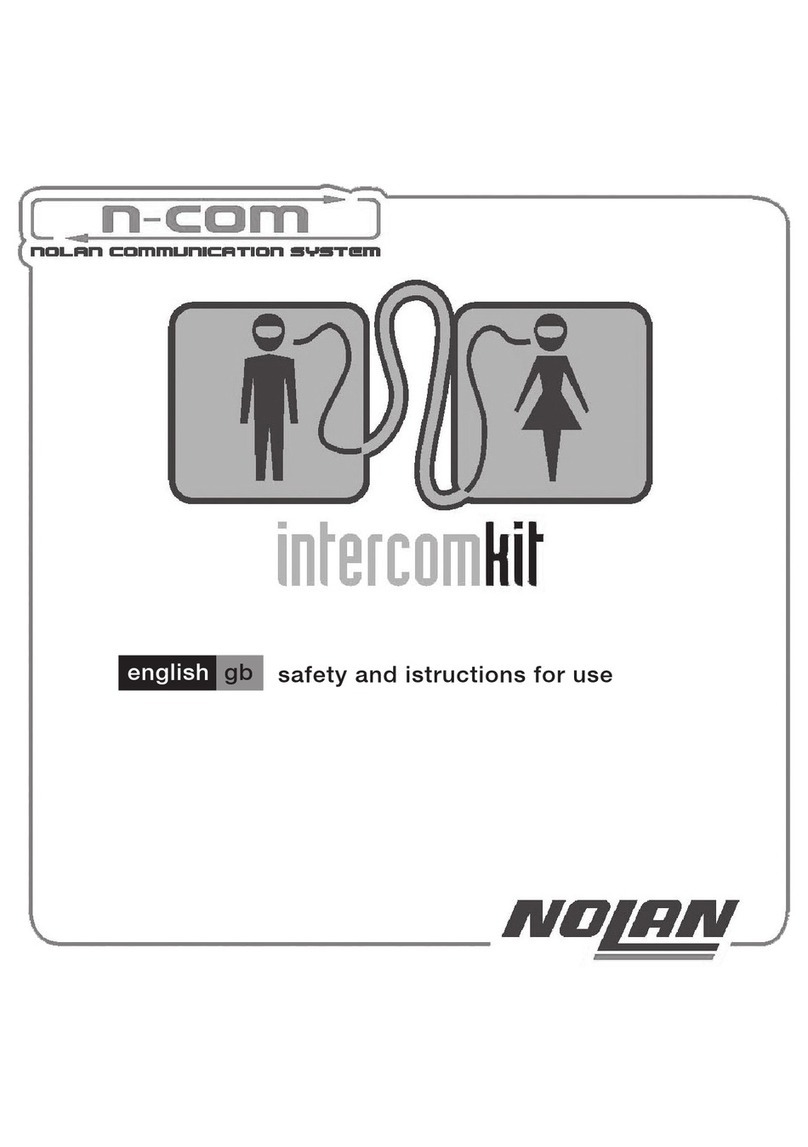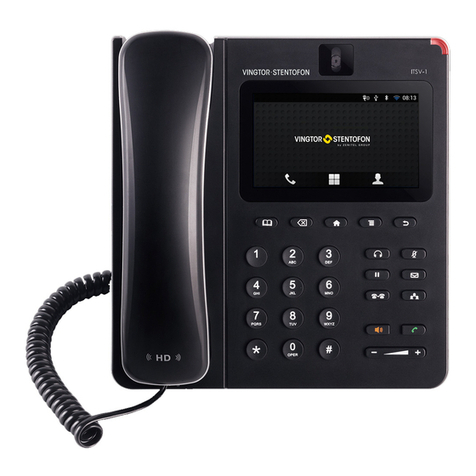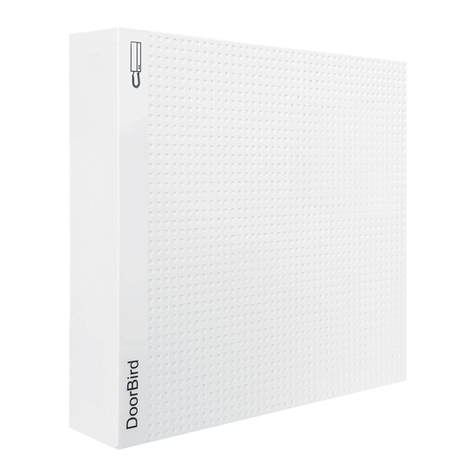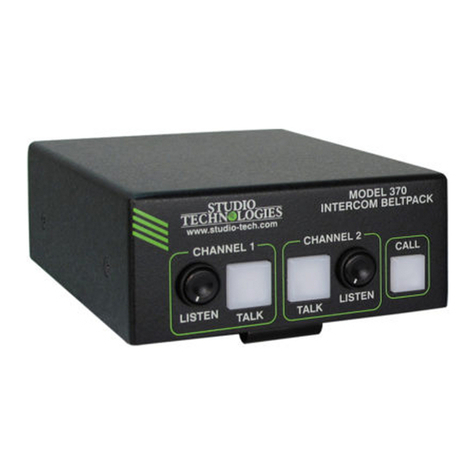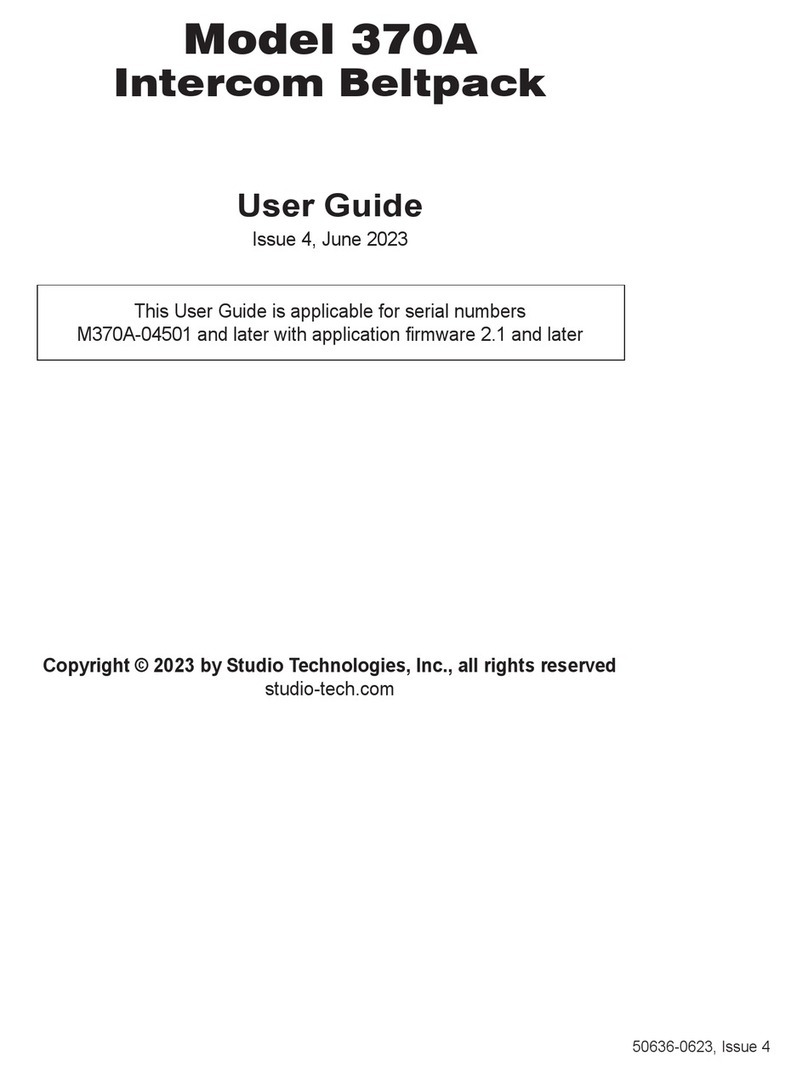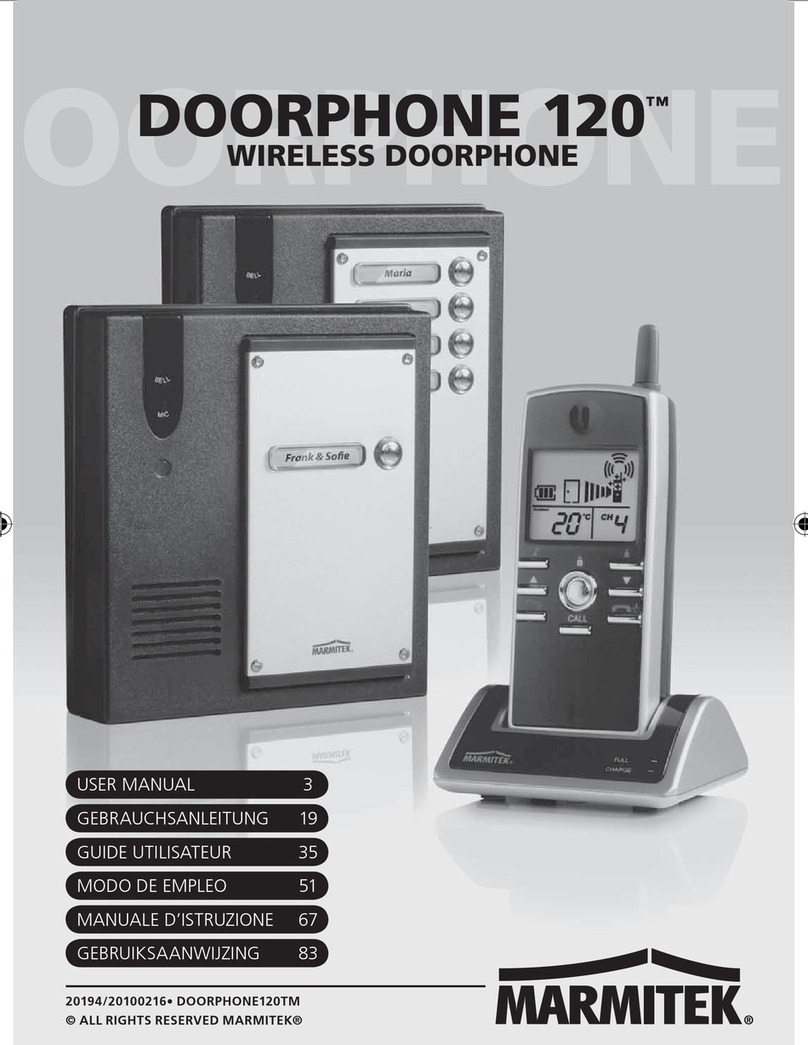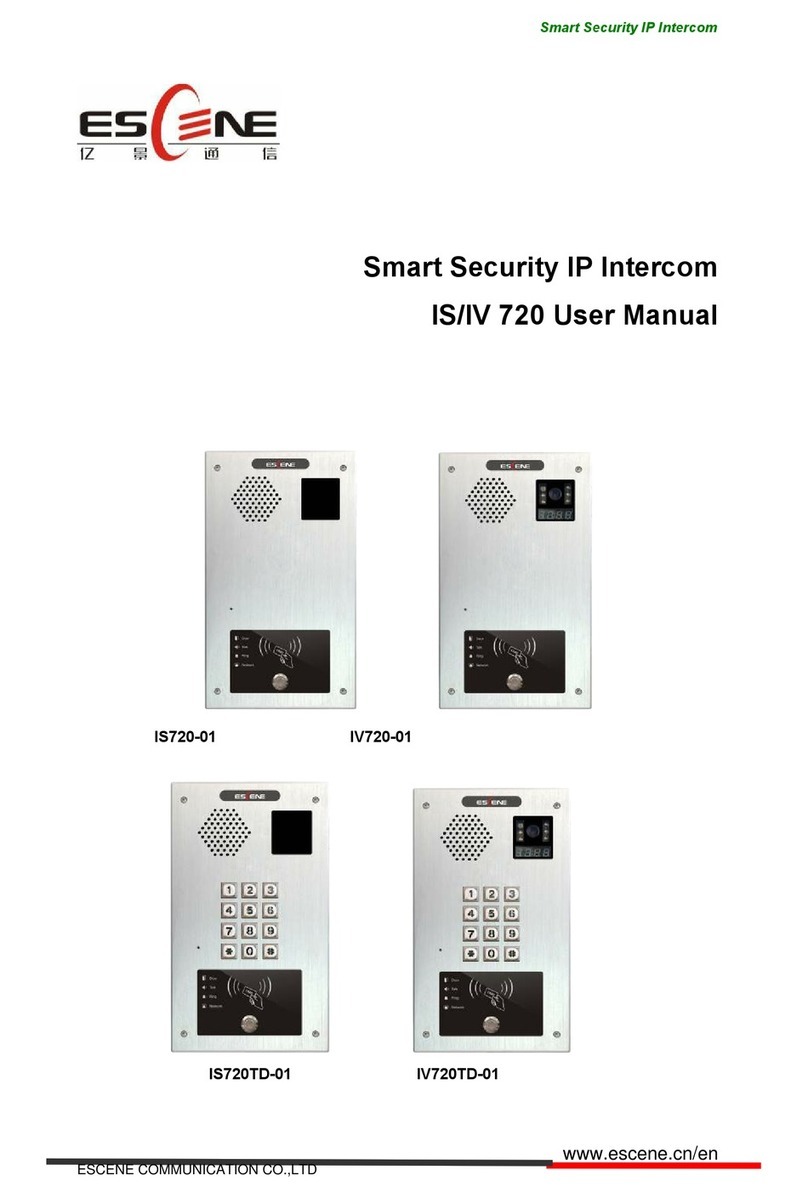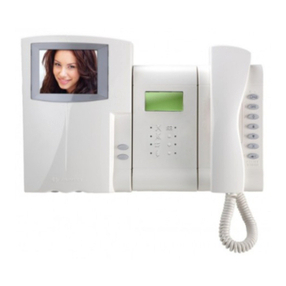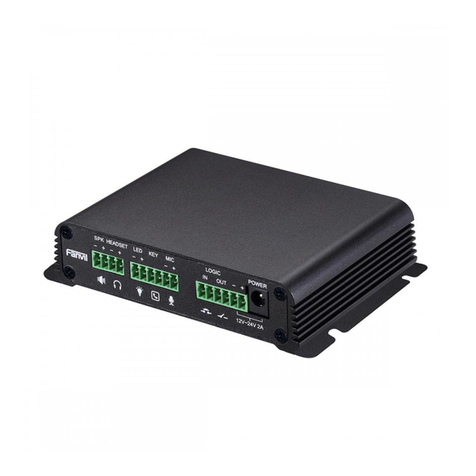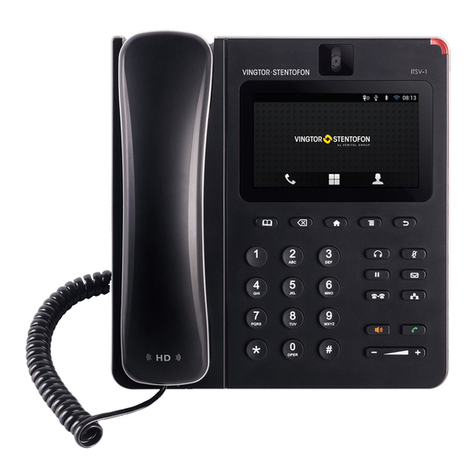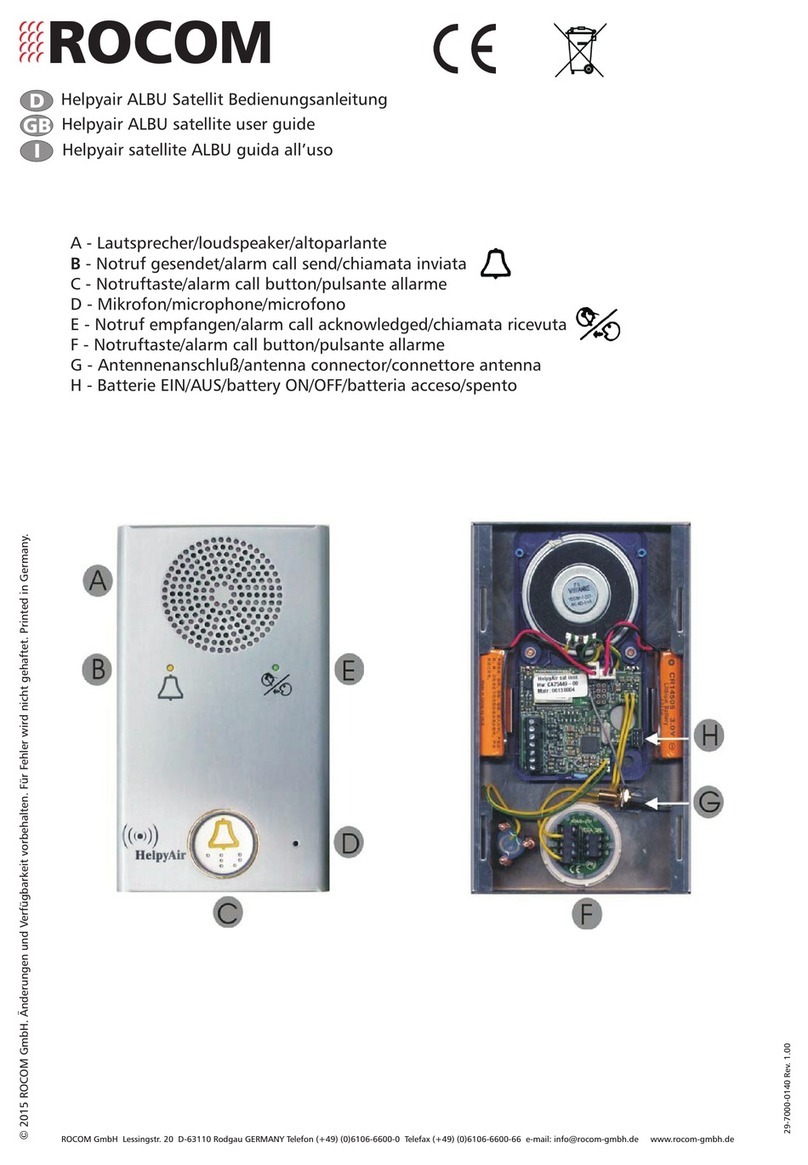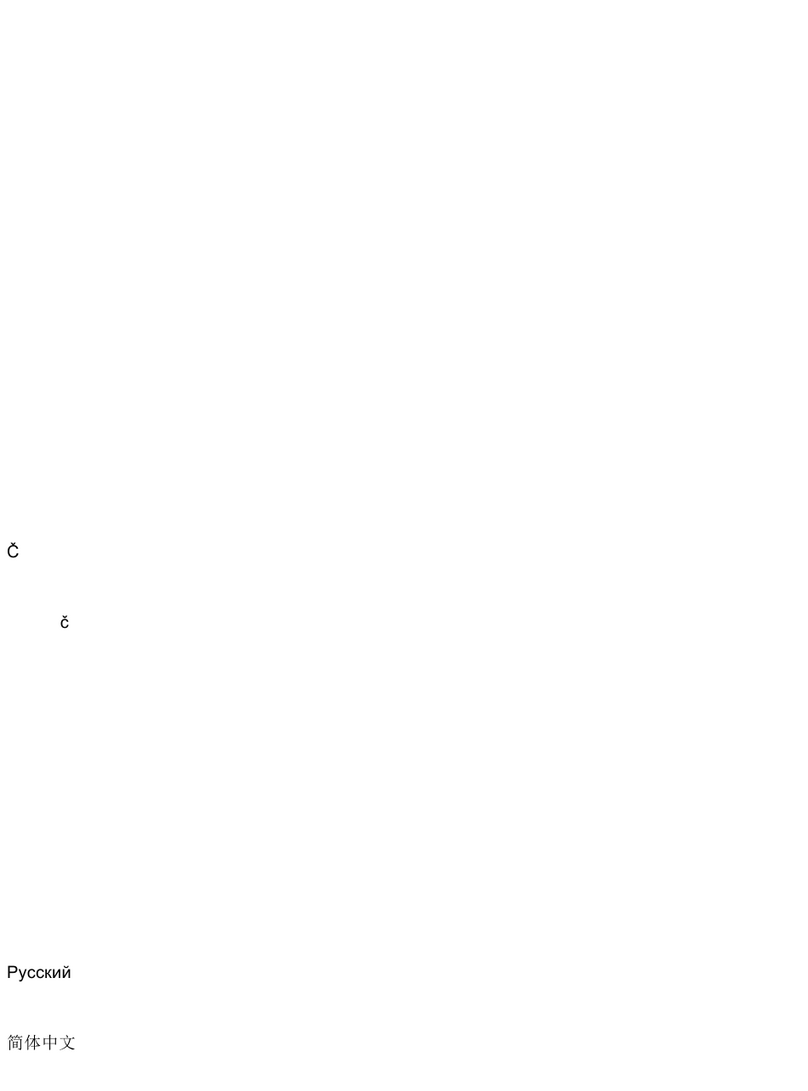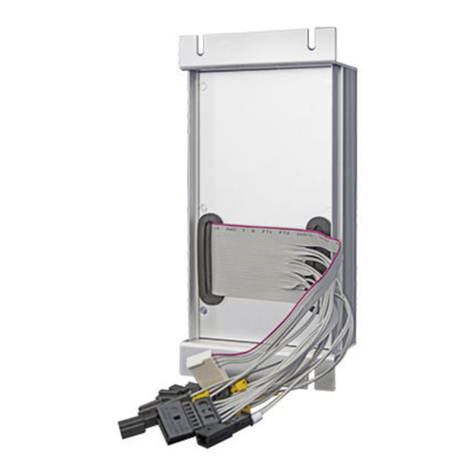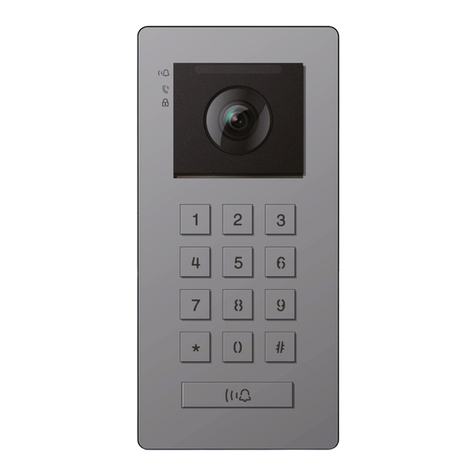
Issue 8, July 2022 Model 348 User Guide
Page 6 Studio Technologies, Inc.
Model 348
INTERCOM STATION
that are compatible with the Windows
®
and macOS
®
operating systems. STcontroller is a fast and simple
means of conguring, revising, saving, and loading a
unit’s operating parameters.
The Model 348’s front panel includes eight rotary
controls (“encoders”) which are used to adjust the
level of the eight Dante monitor input signal sources.
Using RGB (red-green-blue) LEDs, the knob of each
encoder is illuminated and can display if a channel is
muted, indicate if a signal is present on the associ-
ated audio input, and light when an in-band (20 kHz
tone) call signal is detected. The user can monitor the
Dante audio inputs by means of a headset, a built-in
speaker, or two Dante transmitter (output) channels.
Two additional rotary encoders are used to control
the overall audio level and on or o (mute) status of
the signals being sent to the headset and speaker
outputs. A modern class-D amplier integrated circuit
drives the speaker eciently while preserving audio
delity.
Extensive conguration choices allow the operation of
the eight pushbutton switches and associated output
channels to be optimized to meet the needs of an
extensive range of specialized applications. They
can be independently congured for talk (intercom),
IFB (talent cue), call signal (20 kHz tone), and other
related actions. The buttons can also be congured
to provide an “all-call” action associated with the talk
and IFB functions.
A special button conguration mode supports the gen-
eration of talk channels that include Quindar Tones.
These are short-duration “intro” and “outro” audio
signals that were traditionally used in space programs
to control the on and off status of transmitters. In
recent years these tones have taken on the function
of providing an audible indication of when Capsule
Communicator (CapCom) transmissions are taking
place. These ubiquitous “beeps” have become syn-
onymous with ground-to-astronaut communications.
For performance conrmation an integrated sidetone
function allows audio coming from the active talk
audio source to be returned to the headset output.
An audible alert, using the internal speaker, can be
generated in response to a call signal. Provision has
been made such that a technician can “customize” the
Model 348’s hardware. Option kits, purchased sepa-
rately, can be added to support additional functions.
These include adding two remote control inputs which
can be congured to mimic the action of talk buttons.
The Model 348’s compact enclosure has overall
dimensions of 6.5 inches wide (16.5 cm), 2.5 inches
high (6.4 cm), and 4.6 inches deep (11.7 cm). Weigh-
ing 1.8 pounds (0.8 kg), the enclosure is made of steel
to provide some “heft” to minimize the chance of inad-
vertent movement. The Model 348’s main application
rmware can be updated using the USB port on the
back of the unit; the Dante rmware can be updated
via an Ethernet connection.
Ethernet Data and PoE
The Model 348 connects to one or two local
area networks (LANs) by way of two twisted-pair
Ethernet interfaces. The 1000BASE-T Gigabit Ethernet
(GigE) interconnections are made by way of Neutrik
®
etherCON RJ45 jacks. While compatible with stan-
dard RJ45 plugs, etherCON allows a ruggedized
and locking interconnection for harsh or high-reliabil-
ity environments. The two Ethernet interfaces can
be congured, using the Dante Controller software
applications, to serve in Switched or Redundant
modes.
The Model 348’s operating power can be provided
by way of the Primary-PoE Ethernet interface using
the 802.3af Power-over-Ethernet (PoE) standard.
PoE allows fast and efficient interconnection with
the associated data network. Alternately, an external
source of nominal 12 volts DC can be connected to
power the unit. If both are connected then PoE will
be the active power source.
Dante Audio-over-Ethernet
Audio data is sent to and received from the Model
348 using the Dante audio-over-Ethernet media
networking technology. As a Dante-compliant de-
vice, the Model 348’s 11 Dante transmitter (output)
audio channels and 16 Dante receiver (input) audio
channels can be assigned (routed or “subscribed”)
using the Dante Controller software application. The
Dante transmitter and receiver channels support 32
Dante ows, 16 in each direction. The digital audio’s
bit depth is up to 32 with a sample rate of 48 kHz.
Bi-color LEDs, located on the unit’s back panel, pro-
vide status indications of the Ethernet network and
Dante interface performance.




















